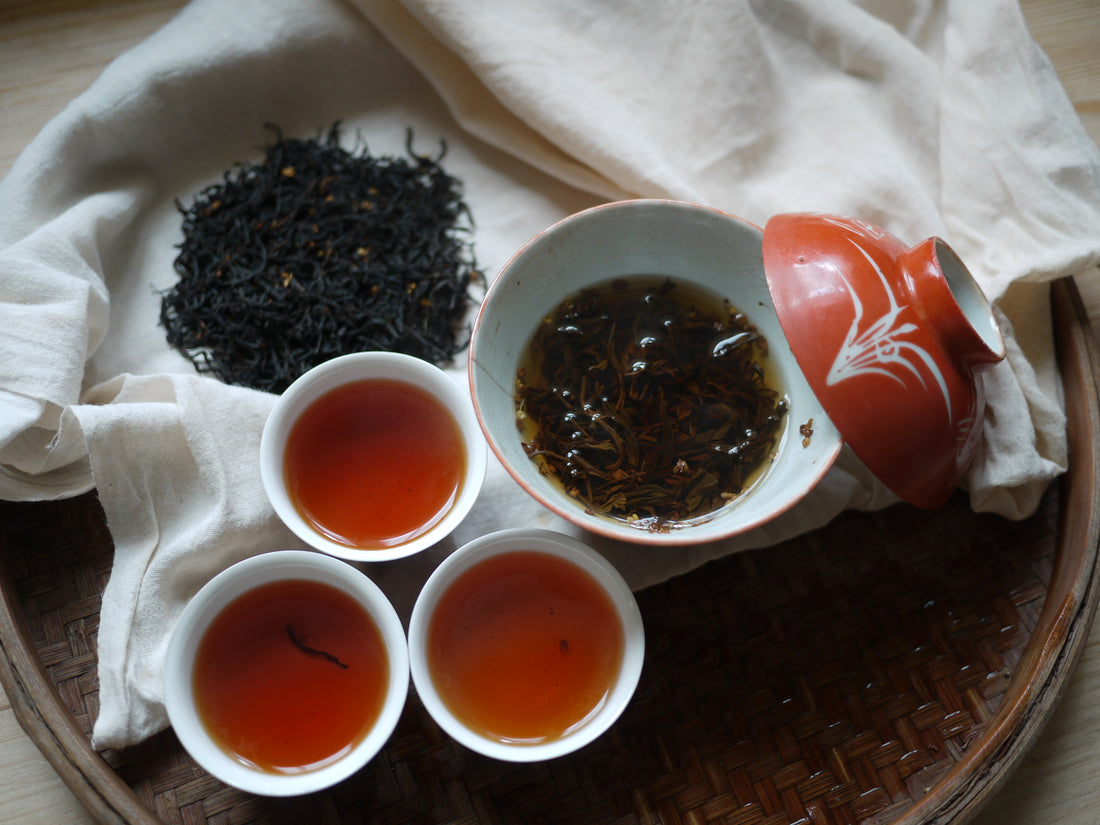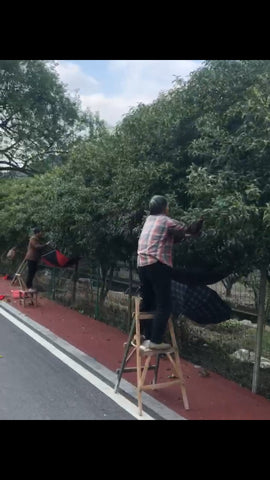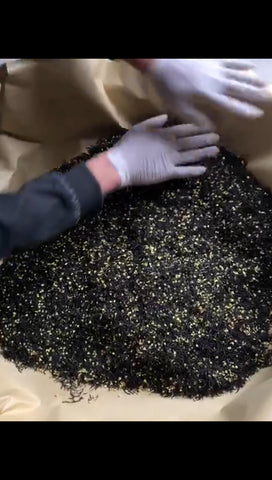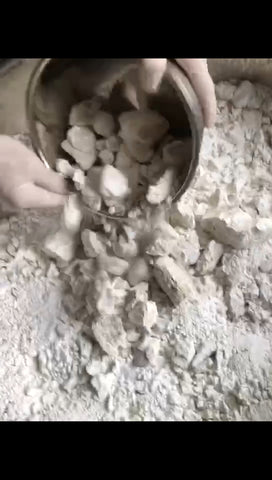
Crafting Osmanthus Jiuqu Hongmei
Share
Let's delve into Jiuqu Hongmei, also affectionately called 'Jiuqu Hong,' 'Jiuqu Wulong,' or 'Longjing Hong.' While it might not enjoy the same limelight as Hangzhou's iconic Longjing green tea, this vibrant red tea has a distinct and savory character.
Origins amid turmoil
The roots of Jiuqu Hongmei stretch back to the turbulent era of the Qing Dynasty Tai Ping Tian Guo period in the Jiuqu Xi area of Wuyi Mountain. This period of upheaval deeply affected the northern Fujian and southern Zhejiang regions, prompting villagers from Wuyi Mountain to seek sanctuary further north in the Dawu Mountain vicinity near Hangzhou. Here, amidst the serene landscapes, they seamlessly merged their ancestral tea cultivation methods with the indigenous tea varieties of Hangzhou, birthing a distinctive red tea. Crafted meticulously from locally-sourced tea leaves, this tea boasted intricately curled leaves akin to intertwining fish hooks, a striking red hue, and an aroma evocative of red plum blossoms. In a nod to their heritage and the enduring spirit of resilience, they named it Jiuqu Hongmei, paying homage to their Wuyi Mountain origins while symbolizing a harmonious blend of tradition, migration, and unwavering determination.
Jiuqu Hongmei takes shape from the delicate Longjing Qunti variety tea leaves, carefully selected to meet stringent harvesting standards. This meticulous process reaches its peak around the Gu Yu period, a time when one bud and two leaves are handpicked at just the right moment as they begin to unfurl. These precise criteria are instrumental in guaranteeing the tea's quality and exquisite flavor.
Traditional scenting techniques and meticulous tea processing
Experienced tea artisans from Hangzhou meticulously craft this Osmanthus Jiuqu Hongmei exclusively for Jing Tea Shop, employing time-honored scenting techniques. As early September's gentle sunshine graces Hangzhou, local golden osmanthus flowers are meticulously harvested, cleansed, and air-dried in the shade. These fragrant blooms are then blended with dried Jiuqu Hongmei tea leaves in a carefully balanced 1:8 ratio, alternating layers with the tea leaves at the top. Throughout this process, the tea leaves absorb the osmanthus' essence and moisture, prompting regular loosening, airing, and flipping of the tea pile to ensure thorough integration. This intricate dance is repeated two to three times until achieving the harmonious fusion of tea and flowers, resulting in a delightful Osmanthus Jiuqu Hongmei blend.
Following the scenting process, the tea undergoes traditional drying. Over the course of approximately 24 hours, the tea leaves absorb a substantial amount of fragrance and moisture, rendering them supple and enriched with the essence of osmanthus. These infused leaves are then meticulously packed into spacious earthenware jars lined with lime, gently compressed, and shielded with local bamboo paper. Subsequently, they are carefully nestled within cotton bags filled with lime, tightly sealed with cotton cloth. This setup allows for a resting period of 3-5 days, during which the lime efficiently absorbs any excess moisture lingering within the tea and flowers, culminating in the completion of the scenting and drying process.



